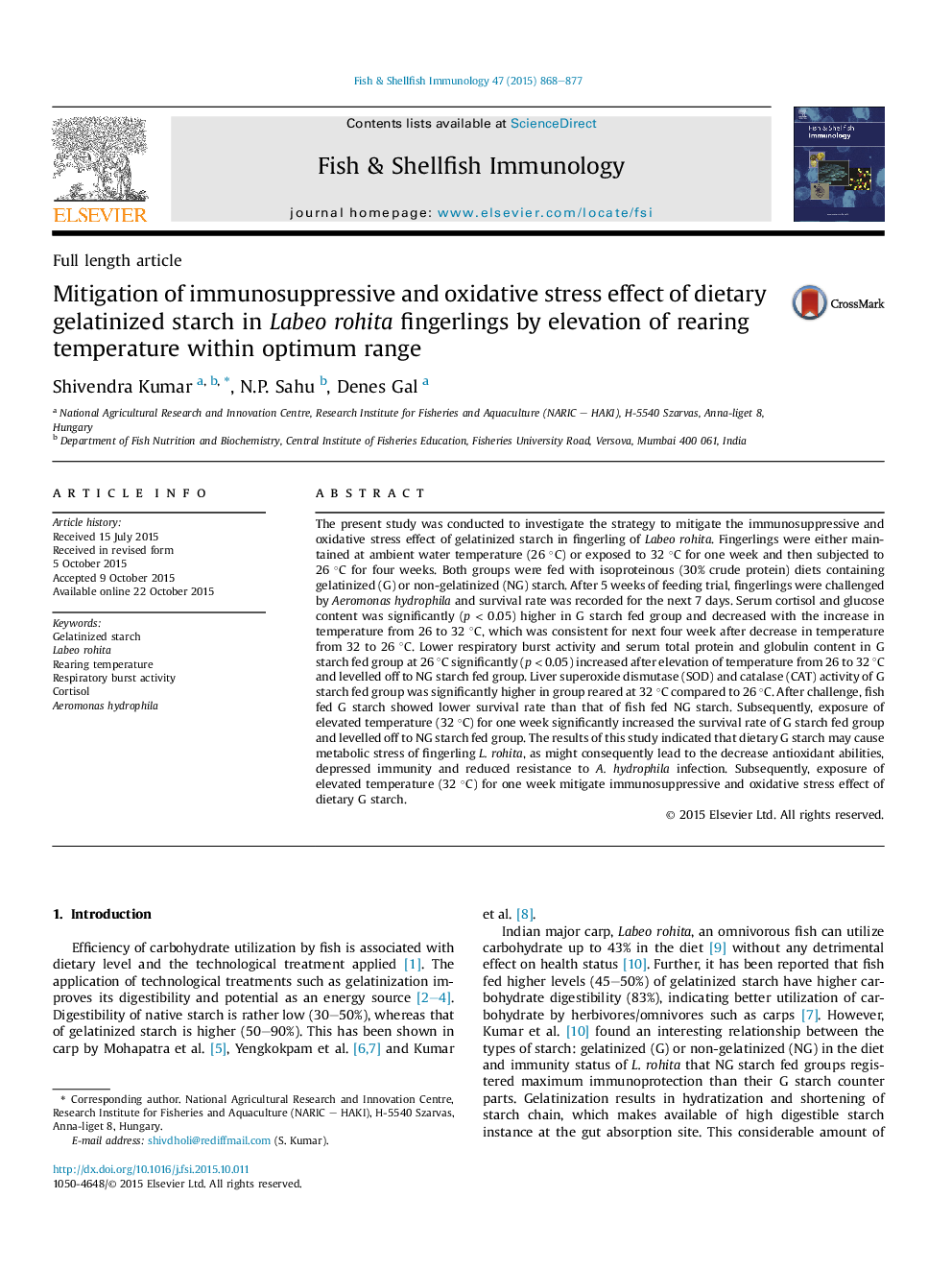| کد مقاله | کد نشریه | سال انتشار | مقاله انگلیسی | نسخه تمام متن |
|---|---|---|---|---|
| 2431007 | 1106741 | 2015 | 10 صفحه PDF | دانلود رایگان |
• Mitigation strategy for immunosuppressive and oxidative stress effect of gelatinized starch in Labeo rohita was evaluated.
• Elevated temperature mitigates immunosuppressive effect and elevate antioxidant ability of L. rohita fed with G starch.
• Elevated temperature increases resistance to Aeromonas hydrophila infection of L. rohita fed with G starch.
The present study was conducted to investigate the strategy to mitigate the immunosuppressive and oxidative stress effect of gelatinized starch in fingerling of Labeo rohita. Fingerlings were either maintained at ambient water temperature (26 °C) or exposed to 32 °C for one week and then subjected to 26 °C for four weeks. Both groups were fed with isoproteinous (30% crude protein) diets containing gelatinized (G) or non-gelatinized (NG) starch. After 5 weeks of feeding trial, fingerlings were challenged by Aeromonas hydrophila and survival rate was recorded for the next 7 days. Serum cortisol and glucose content was significantly (p < 0.05) higher in G starch fed group and decreased with the increase in temperature from 26 to 32 °C, which was consistent for next four week after decrease in temperature from 32 to 26 °C. Lower respiratory burst activity and serum total protein and globulin content in G starch fed group at 26 °C significantly (p < 0.05) increased after elevation of temperature from 26 to 32 °C and levelled off to NG starch fed group. Liver superoxide dismutase (SOD) and catalase (CAT) activity of G starch fed group was significantly higher in group reared at 32 °C compared to 26 °C. After challenge, fish fed G starch showed lower survival rate than that of fish fed NG starch. Subsequently, exposure of elevated temperature (32 °C) for one week significantly increased the survival rate of G starch fed group and levelled off to NG starch fed group. The results of this study indicated that dietary G starch may cause metabolic stress of fingerling L. rohita, as might consequently lead to the decrease antioxidant abilities, depressed immunity and reduced resistance to A. hydrophila infection. Subsequently, exposure of elevated temperature (32 °C) for one week mitigate immunosuppressive and oxidative stress effect of dietary G starch.
Journal: Fish & Shellfish Immunology - Volume 47, Issue 2, December 2015, Pages 868–877
